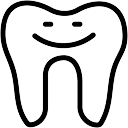TMJ Therapy
Temporomandibular joint disorders (TMD), sometimes referred to as TMJ, are quite common and can affect men, women, and children of all ages. TMD is an umbrella term covering pain and dysfunction of the temporomandibular joints, which connect the lower jaw to the skull, and the attached muscles that move the lower jaw.
Signs and symptoms of TMD may include:
- Pain in one or both of the temporomandibular joints
- Pain or tenderness in the jaw muscles
- Aching pain in and around the ear
- Pain or difficulty chewing
- Facial pain
- Popping, clicking or crunching sounds in the jaw joints
- Locking in the jaw joint making it difficult to open or close the mouth
- Ear pain without actual ear infection
- A congested feeling in the ears
- Ringing in the ears
- Headaches
Causes of TMD
TMD is a complicated condition often making it difficult to determine the exact cause(s). Patients with TMD exhibit symptoms that are highly variable in number, intensity and frequency. Also, TMD-related pain is often caused by a combination of factors, such as; your “bite”, genetics, arthritis or jaw injury. To further complicate matters, there are other conditions such as migraines, neck pain, fibromyalgia and nerve disorders that cause pain in the jaws that is similar to that of TMD.
Many people who have jaw pain also tend to clench or grind their teeth (bruxism). However, many other people clench or grind their teeth habitually and never develop TMD pain. In general, chronic clenching or grinding puts pressure on the jaw joints which over time may damage the ligaments and the cartilage disk inside the jaw joints. This disk may erode or move out of its proper alignment causing clicking or locking within the join.
Fortunately, in most cases the pain and discomfort associated with TMJ disorders is temporary and can be relieved with self-managed care or nonsurgical treatments. TMD is not life-threatening, however it can be detrimental to quality of life as symptoms can become chronic and difficult to manage.
In most cases the pain associated with TMD is temporary and manageable
Diagnosis of TMD
In most cases, TMD is related to a problem in either the chewing muscles, within the jaw joint itself, or a combination of the two. At Viva Dental Victoria, your dentist will discuss your symptoms with you and examine your jaw.
Your dentist will:
- Listen to and feel your jaw when you open and close your mouth
- Observe the range of motion in your jaw
- Press on areas around your jaw to identify sites of pain or discomfort
- Press up on your jaw to “load” the jaw joints
If your dentist suspects a problem, you may need:
- Dental X-rays to examine your teeth and jaw
- Prescribed painkillers or muscle relaxants
- A recommended appliance to alleviate discomfort and reset the jaw positioning
- A referral for physiotherapy or massage therapy
In difficult cases, you may be referred to a specialist for further diagnosis and treatment. This may require further testing such as 3D imaging of your jaw, MRI, or TMJ arthroscopy.
In some cases, the cause of TMD is due to an imbalanced bite. In these cases an oral appliance, such as a deprogrammer, may help determine whether the cause of your TMD is related to your bite, your jaw joint, or some other condition like migraine headaches. These devices, usually worn for a short period of time, allow you to bite only on your front teeth, eliminating the effects of clenching and grinding.
TMD Treatment
Treatment for TMD usually involves very conservative therapies initially such as:
- Oral appliances
- Moist heat application
- Jaw exercises
- Massage or physiotherapy
- Pain medications
- Muscle relaxants
- Behavioural changes such as not chewing gum or opening wide
If these initial treatments don't provide sufficient relief, then other options may be considered, such as:
- Botox injections in the muscles
- Medical acupuncture
- Trigger point injections
- TENS therapy
Surgery is typically a last resort after conservative measures have failed, but some people with TMJ disorders may benefit from surgical treatments.
If appliance therapy has been successful in eliminating your pain, the TMD may be related to your bite. In these cases, treatments aimed at creating a more balanced bite may be considered. This may include reshaping of teeth (equilibration),
crowns, and/or
orthodontics.
How To Minimize Your Risk of TMD
There are a number of factors that may put you at greater risk of developing TMD including:
- Trauma to the jaw
- An unbalanced bite
- Day or night time tooth grinding
- Being double-jointed
- Arthritis in other joints in the body
- Lifestyle choices that require repetitive or prolonged opening of your mouth such as singing
To minimize the risk of TMD, you and your dentist might consider some of the following:
- Treating an unbalanced bite
- Managing tooth grinding
- Decreasing stress to the jaw through the use of an oral appliance
- Increasing jaw mobility with jaw exercises
- Lifestyle adjustments

